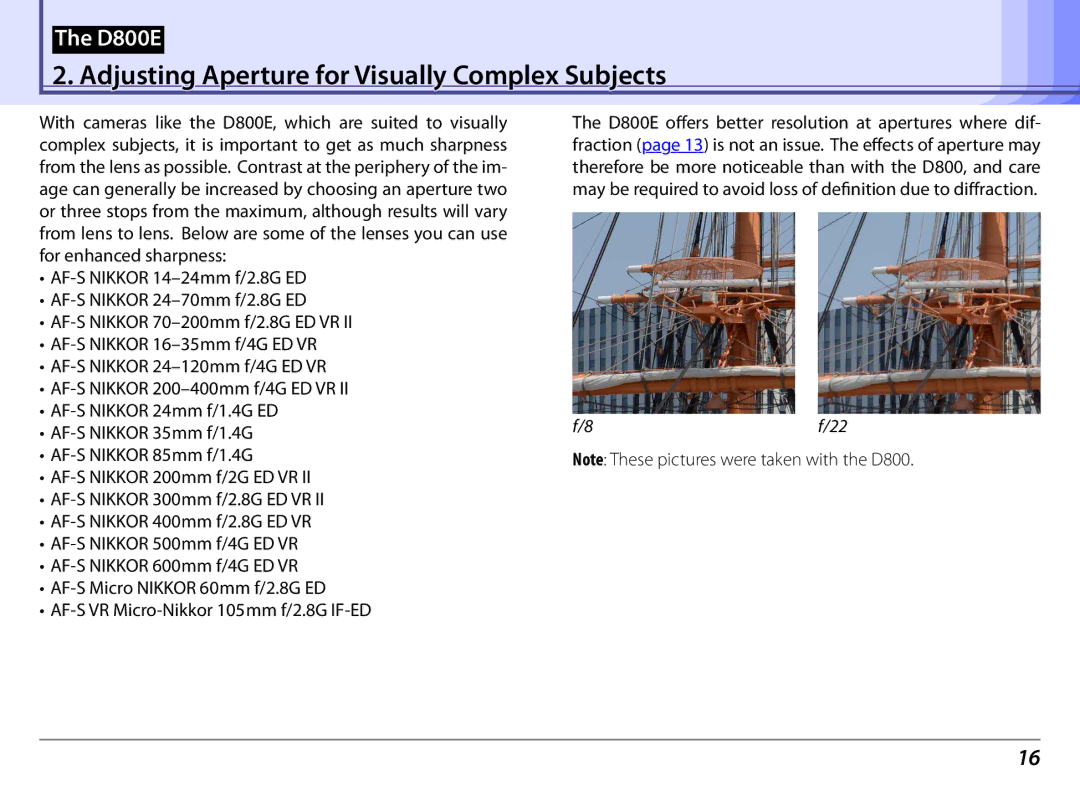
The D800E
2. Adjusting Aperture for Visually Complex Subjects
With cameras like the D800E, which are suited to visually complex subjects, it is important to get as much sharpness from the lens as possible. Contrast at the periphery of the im- age can generally be increased by choosing an aperture two or three stops from the maximum, although results will vary from lens to lens. Below are some of the lenses you can use for enhanced sharpness:
•
•
•
•
•
•
•
•
•
•
•
•
•
•
•
•
The D800E offers better resolution at apertures where dif- fraction (page 13) is not an issue. The effects of aperture may therefore be more noticeable than with the D800, and care may be required to avoid loss of definition due to diffraction.
f/8 | f/22 |
Note: These pictures were taken with the D800.
16
